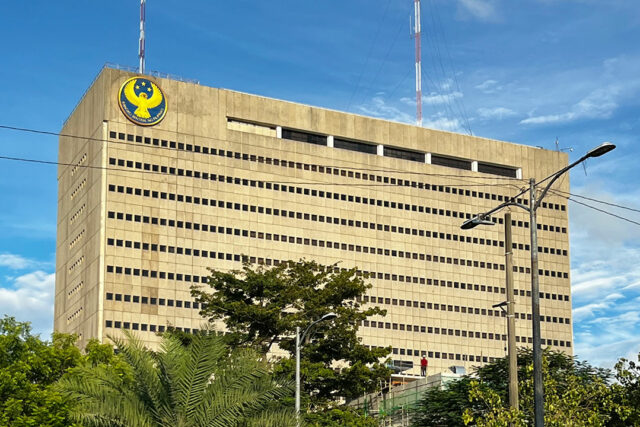Gov’t fully awards T-bills even as rates mostly rise on CPI bets
THE GOVERNMENT made a full award of the Treasury bills (T-bills) it offered on Monday even as rates mostly rose amid expectations that Philippine inflation picked up slightly last month.
The Bureau of the Treasury (BTr) raised P15 billion as planned from the T-bills it offered on Monday as total bids reached P43.976 billion or almost thrice the amount on the auction block.
Broken down, the BTr borrowed P5 billion as programmed from the 91-day T-bills as tenders for the tenor reached P19.066 billion. The three-month paper was quoted at an average rate of 5.698%, 2.1 basis points (bps) lower than 5.719% seen last week. Accepted rates ranged from 5.67% to 5.71%.
The government likewise made a full P5-billion award of the 182-day securities, with bids reaching P11.91 billion. The average rate for the six-month T-bill stood at 5.904, up by 1.8 bps from the 5.886% fetched last week, with accepted rates at 5.895% to 5.913%.
Lastly, the Treasury raised the planned P5 billion via the 364-day debt papers as demand for the tenor totaled P13 billion. The average rate of the one-year debt inched up by 0.3 bp to 6.046% from the 6.043% quoted last week. Accepted yields were from 6.035% to 6.055%.
The BTr made a full award of its T-bill offer as the papers fetched yields “lower than the prevailing secondary market rates” and amid strong investor demand, it said in a statement.
At the secondary market before the auction, the 91-, 182-, and 364-day T-bills were quoted at 5.7356%, 5.9596%, and 6.0653%, respectively, based on PHP Bloomberg Valuation Service Reference Rates data provided by the Treasury.
“The higher rates awarded this week reflected expectations of an uptick in May domestic inflation due to be released on Wednesday,” a trader said in an e-mail.
A BusinessWorld poll of 16 analysts yielded a median estimate of 4% for the May consumer price index (CPI), within the Bangko Sentral ng Pilipinas’ 3.7-4.5% forecast for the month.
If realized, May inflation would be faster than 3.8% in April but slower than the 6.1% print a year earlier. This would also mark the sixth straight month that the CPI was within the central bank’s 2-4% annual target.
The Philippine Statistics Authority will release May inflation data on Wednesday (June 5).
T-bill rates mostly rose due to a weaker peso recently, Rizal Commercial Banking Corp. Chief Economist Michael L. Ricafort said in a Viber message.
On Friday, the peso closed at P58.51 per dollar, strengthening by 12.5 centavos from its P58.635 finish on Thursday, Bankers Association of the Philippines data showed.
Still, year to date, the peso has depreciated by P3.14 from its end-2023 close of P55.37 versus the greenback.
On Tuesday, the BTr will offer P30 billion in reissued 20-year Treasury bonds (T-bonds) with a remaining life of seven years and one month.
The Treasury wants to raise P180 billion from the domestic market this month, or P60 billion from T-bills and P120 billion via T-bonds.
The government borrows from local and foreign sources to help fund its budget deficit, which is capped at P1.48 trillion or 5.6% of gross domestic product for this year. — Aaron Michael C. Sy













